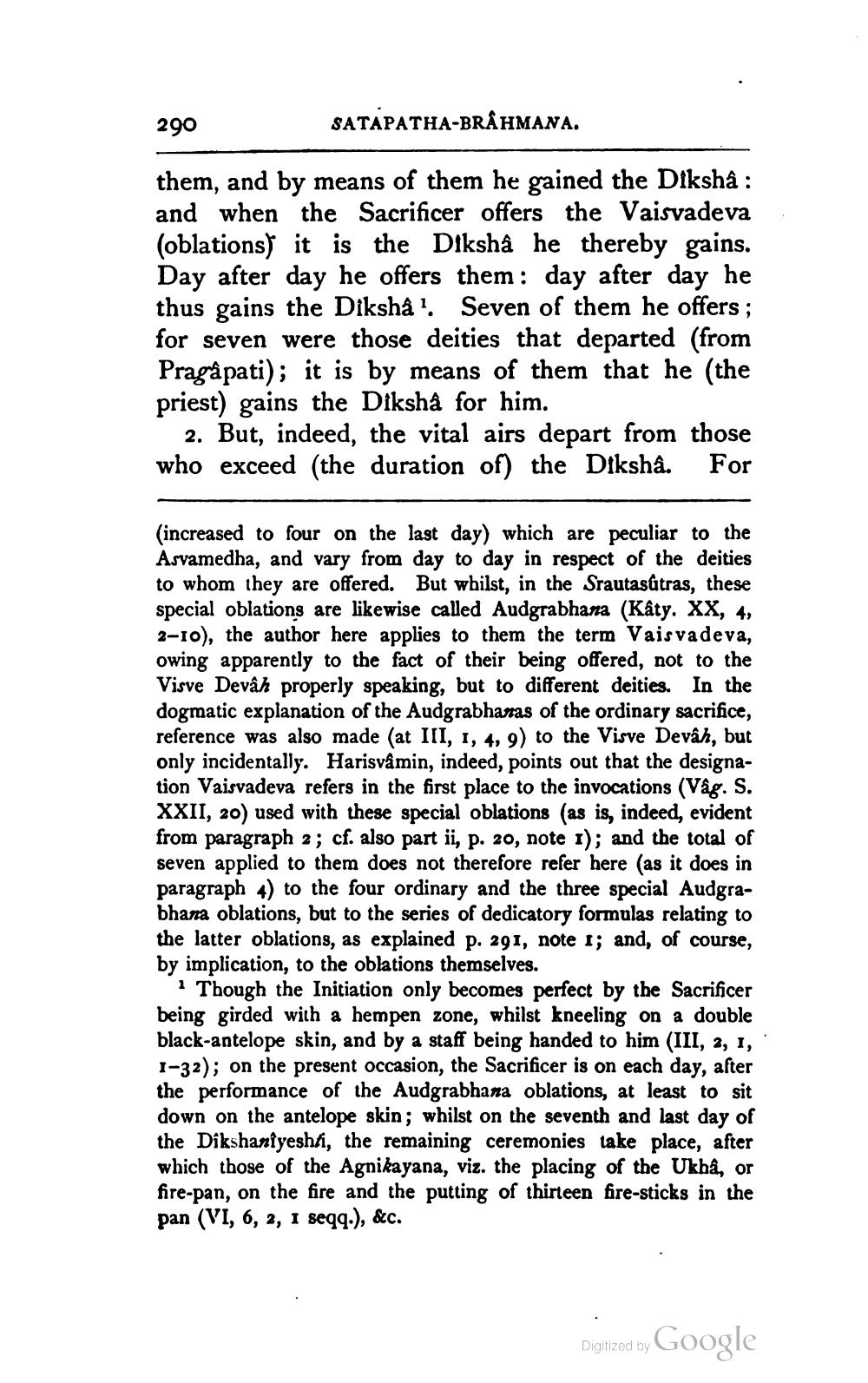________________
290
SATAPATHA-BRÂHMANA.
them, and by means of them he gained the Diksha : and when the Sacrificer offers the Vaisvadeva (oblations) it is the Dikshâ he thereby gains. Day after day he offers them: day after day he thus gains the Dikshå? Seven of them he offers ; for seven were those deities that departed (from Pragâ pati); it is by means of them that he (the priest) gains the Dikshå for him.
2. But, indeed, the vital airs depart from those who exceed (the duration of) the Diksha. For
(increased to four on the last day) which are peculiar to the Asvamedha, and vary from day to day in respect of the deities to whom they are offered. But whilst, in the Srautasätras, these special oblations are likewise called Audgrabhana (Kâty. XX, 4, 2-10), the author here applies to them the term Vaisvadeva, owing apparently to the fact of their being offered, not to the Visve Devâh properly speaking, but to different deities. In the dogmatic explanation of the Audgrabhanas of the ordinary sacrifice, reference was also made (at III, 1, 4, 9) to the Visve Devâh, but only incidentally. Harisvâmin, indeed, points out that the designation Vaisvadeva refers in the first place to the invocations (Våg. S. XXII, 20) used with these special oblations (as is, indeed, evident from paragraph 2; cf. also part ii, p. 20, note I); and the total of seven applied to them does not therefore refer here (as it does in paragraph 4) to the four ordinary and the three special Audgrabhana oblations, but to the series of dedicatory formulas relating to the latter oblations, as explained p. 291, note 1; and, of course, by implication, to the oblations themselves.
Though the Initiation only becomes perfect by the Sacrificer being girded with a hempen zone, whilst kneeling on a double black-antelope skin, and by a staff being handed to him (III, 2, 1, 1-32); on the present occasion, the Sacrificer is on each day, after the performance of the Audgrabhana oblations, at least to sit down on the antelope skin; whilst on the seventh and last day of the Dikshaniyeshti, the remaining ceremonies take place, after which those of the Agnikayana, viz. the placing of the Ukhâ, or fire-pan, on the fire and the putting of thirteen fire-sticks in the pan (VI, 6, 2, 1 seqq.), &c.
Digitized by Google




